Serving 476 students in grades Kindergarten-8, Learn John Kathy Schreiber Chrtr ranks in the bottom 50% of all schools in Illinois for overall test scores (math proficiency is bottom 50%, and reading proficiency is bottom 50%).
The percentage of students achieving proficiency in math is 12% (which is lower than the Illinois state average of 28%). The percentage of students achieving proficiency in reading/language arts is 27% (which is lower than the Illinois state average of 30%).
The student:teacher ratio of 13:1 is equal to the Illinois state level of 13:1.
Minority enrollment is 97% of the student body (majority Hispanic), which is higher than the Illinois state average of 55% (majority Hispanic).
Quick Stats (2025)
- School Type: Charter School
- Grades: Kindergarten-8
- Enrollment: 476 students
- Student:Teacher Ratio: 13:1
- Minority Enrollment: 97%
- Overall Testing Rank: Bottom 50% in IL
- Math Proficiency: 12% (Btm 50%)
- Reading Proficiency: 27% (Top 50%)
- Science Proficiency: 40-44% (Btm 50%)
- Source: National Center for Education Statistics (NCES), IL Dept. of Education
Top Rankings
Learn John Kathy Schreiber Chrtr ranks among the top 20% of public schools in Illinois for:
Category
Attribute
Most improved public schools
School Overview
Learn John Kathy Schreiber Chrtr's student population of 476 students has grown by 17% over five school years.
The teacher population of 37 teachers has grown by 19% over five school years.
School Type
Grades Offered
Grades Kindergarten-8
Total Students
476 students
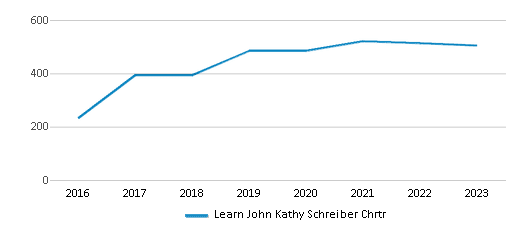
Gender %
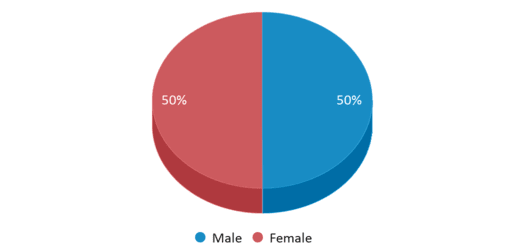
Total Classroom Teachers
37 teachers
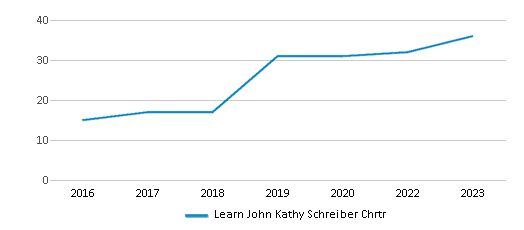
Students by Grade
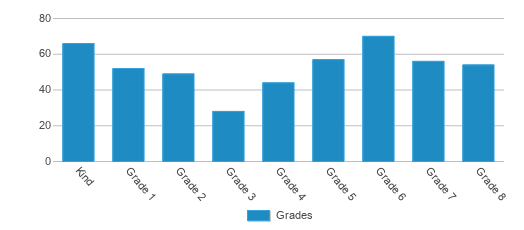
School Calendar
School Rankings
Learn John Kathy Schreiber Chrtr ranks within the bottom 50% of all 3,426 schools in Illinois (based off of combined math and reading proficiency testing data).
The diversity score of Learn John Kathy Schreiber Chrtr is 0.24, which is less than the diversity score at state average of 0.70. The school's diversity has stayed relatively flat over five school years.
Overall Testing Rank
#1949 out of 3426 schools
(Bottom 50%)
(Bottom 50%)
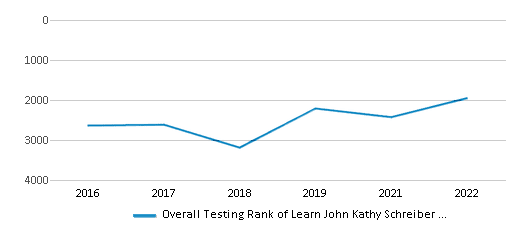
Math Test Scores (% Proficient)
(20-21)12%
28%
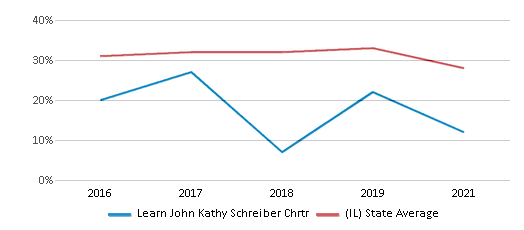
Reading/Language Arts Test Scores (% Proficient)
27%
30%
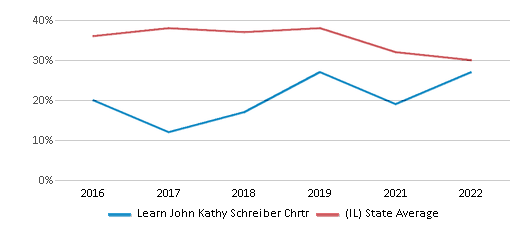
Science Test Scores (% Proficient)
40-44%
50%
Student : Teacher Ratio
13:1
13:1

American Indian
n/a
1%
Asian
n/a
6%
Hispanic
87%
28%

Black
9%
16%
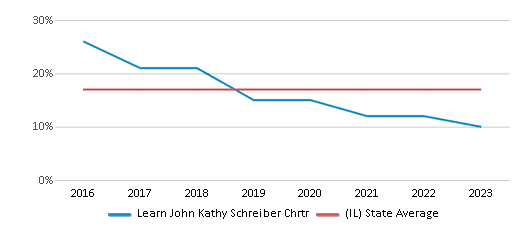
White
3%
45%
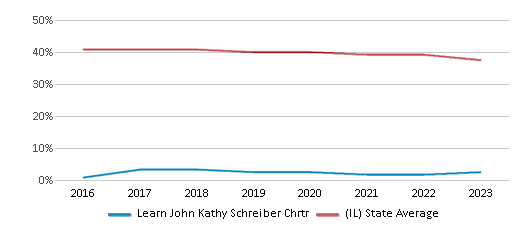
Hawaiian
n/a
n/a
Two or more races
1%
4%
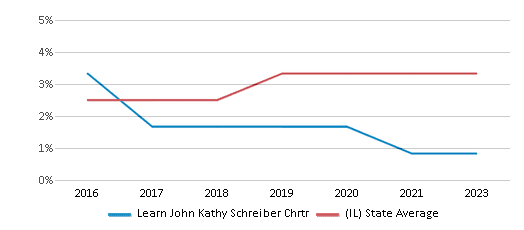
All Ethnic Groups
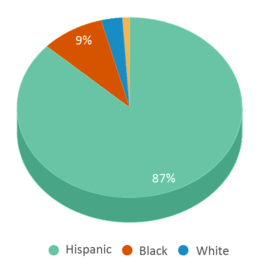
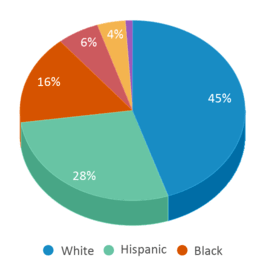
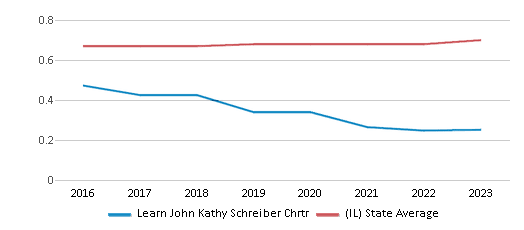
Eligible for Free Lunch
24%
43%
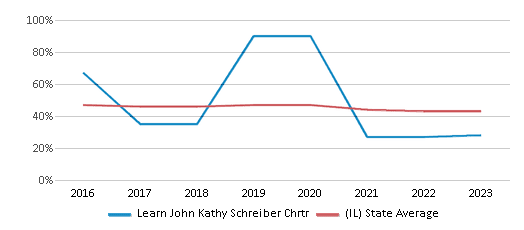
School Statewide Testing
School District Name
Source: National Center for Education Statistics (NCES), IL Dept. of Education
Profile last updated:
Frequently Asked Questions
What is Learn John Kathy Schreiber Chrtr's ranking?
Learn John Kathy Schreiber Chrtr is ranked #1949 out of 3,426 schools, which ranks it among the bottom 50% of public schools in Illinois.
What schools are Learn John Kathy Schreiber Chrtr often compared to?
Learn John Kathy Schreiber Chrtris often viewed alongside schools like Little Fort Elementary School by visitors of our site.
What percent of students have achieved state testing proficiency in math and reading?
12% of students have achieved math proficiency (compared to the 28% IL state average), while 27% of students have achieved reading proficiency (compared to the 30% IL state average).
How many students attend Learn John Kathy Schreiber Chrtr?
476 students attend Learn John Kathy Schreiber Chrtr.
What is the racial composition of the student body?
87% of Learn John Kathy Schreiber Chrtr students are Hispanic, 9% of students are Black, 3% of students are White, and 1% of students are Two or more races.
What is the student:teacher ratio of Learn John Kathy Schreiber Chrtr?
Learn John Kathy Schreiber Chrtr has a student ration of 13:1, which is equal to the Illinois state average of 13:1.
What grades does Learn John Kathy Schreiber Chrtr offer ?
Learn John Kathy Schreiber Chrtr offers enrollment in grades Kindergarten-8
What school district is Learn John Kathy Schreiber Chrtr part of?
Learn John Kathy Schreiber Chrtr is part of Learn John And Kathy Schreiber Ch School District.
School Reviews
1 3/30/2020
Horrible student and parent service. Administration and teachers gossip negatively about children's parents. They keep buses full of children waiting outside for almost an hour to avoid having support staff available. They ignore parent complaints and lie to them about solutions. They don't have a nurse, or any special needs support staff on a consistent basis. They lie about their student-teacher ratios and their ability to provide any before and after-school clubs, teams or activities. Their academic performance is low, much like the school district, so they aren't providing any improvements to children. They pay their administration high salaries and skimp on services for the children; they reduce IEP services claiming it's about keeping children in the class but actually hurt the child by removing services so they can save money on the support staff.
Review Learn John Kathy Schreiber Chrtr. Reviews should be a few sentences in length. Please include any comments on:
- Quality of academic programs, teachers, and facilities
- Availability of music, art, sports and other extracurricular activities
Recent Articles

Understanding the U.S. Department of Education: Structure, Impact, and Evolution
We explore how the Department of Education shapes American education, from its cabinet-level leadership to its impact on millions of students, written for general audiences seeking clarity on this vital institution.

Segregation in K-12 Education: Colonial Era
Explore the origins of educational segregation during the colonial era and the differential treatment of Native American, African American, and white students. This article delves into the historical context, policies, and societal attitudes that shaped early education in colonial America, highlighting the disparities and injustices that persisted within the schooling systems of that time.

December 16, 2024
Personalized Learning: Revolutionizing Education for the 21st CenturyExplore the revolutionary approach of Personalized Learning in K-12 education. This article discusses the benefits, challenges, and potential of tailoring education to individual student needs, incorporating technology and adaptive learning methods to prepare students for the 21st century.





